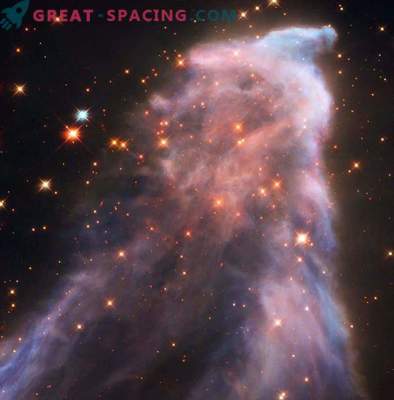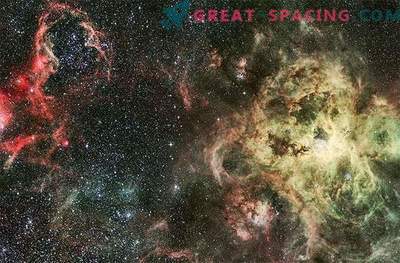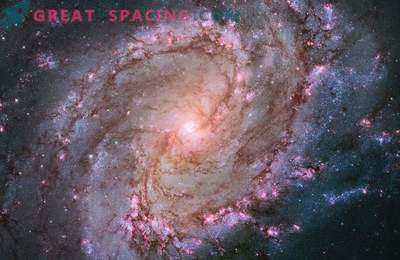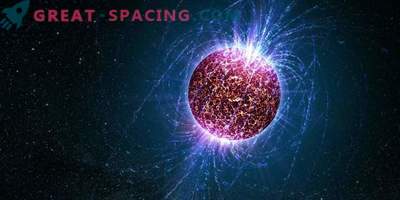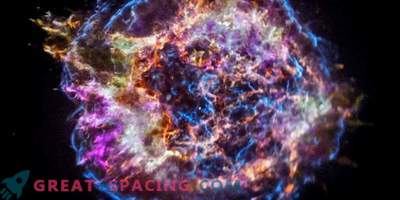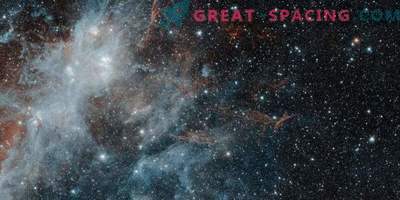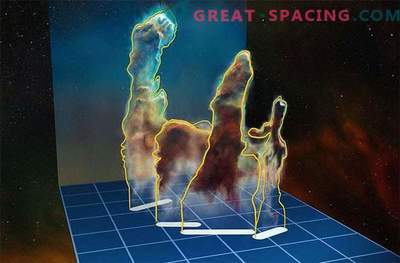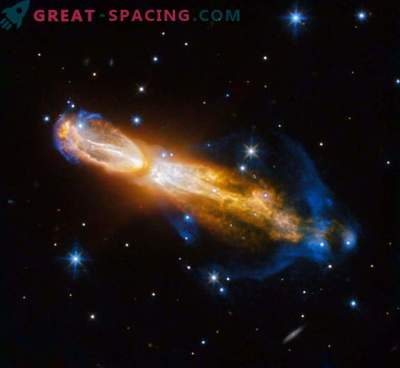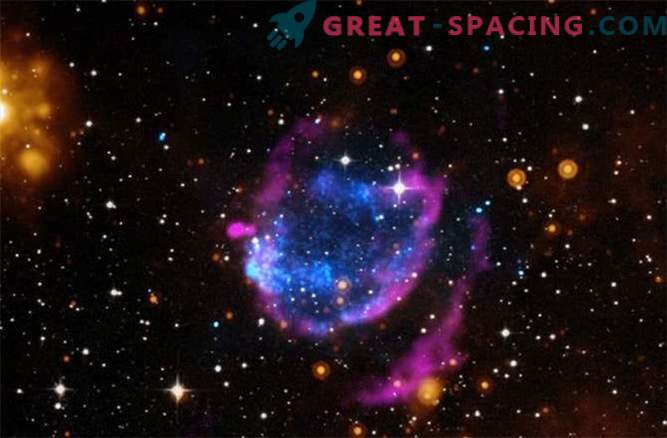
When a truly massive star, for example, ten times more in mass than our Sun, reaches the end of its life, having exhausted all its fuel (hydrogen) within itself, it does not die “quietly in the night”, but explodes and turns into a “supernova” (in particular, type II) star. At the same time, it furiously throws off its outer layers, leading to the slow spreading of cosmic matter in outer space and temporarily turning out to be brighter than all the other stars of the galaxy.
Continuously expanding shells of gas and stellar matter, generated by the explosion, can be observed for a long time after the emergence of a supernova. They glow brightly in many wavelength ranges of electromagnetic radiation, and in the visible spectrum, and, more often, in the invisible to our eyes. And each type of radiation strictly corresponds to the chemical composition of the ejected stellar matter and its temperature.
“Plowing” outer space at supersonic speed, supernova remnants, like a shock wave, compress interstellar matter and make it glow too.
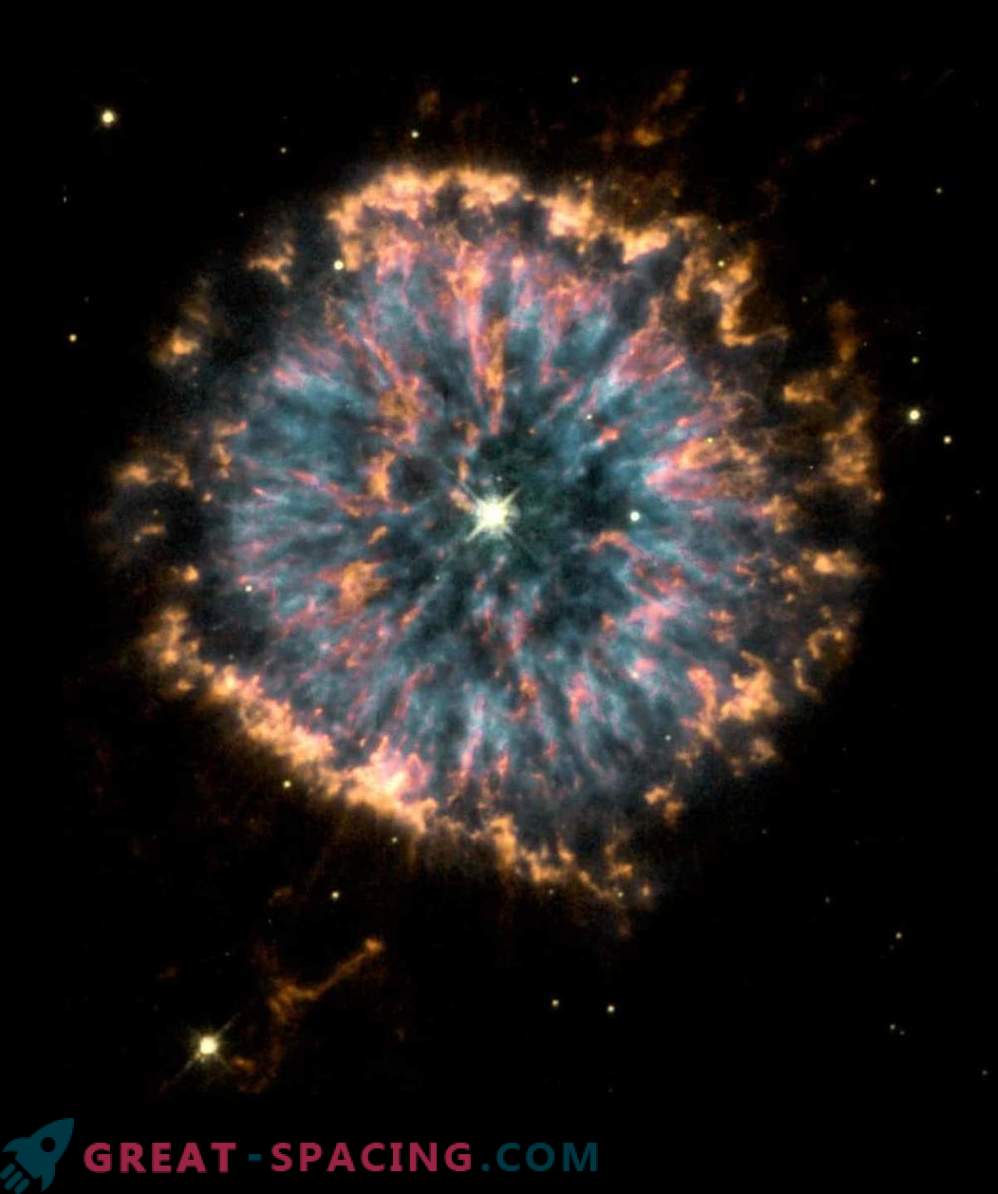
NASA's Hubble Space Telescope was able to capture the celestial eye, known as the planetary nebula NGC 6751. The Hubble Heritage project released this image to mark the 10th anniversary of the device’s operation in space. Nebula glows in the territory of the Eagle constellation. This is a gas cloud ejected several thousand years ago by a hot star, observed in the center. Using data from X-ray space telescopes (“Chandra” - NASA and “XMM-Netwon” - ESA), astronomers discovered one such residue in our galaxy, which “grabbed” a surprisingly large amount of stellar material. Registered as G352.7-0.1, this “piece” of supernova is located in the constellation Scorpio 24 000 light years away. He took with him so much matter of the original star G352, that it alone exceeds by 45 times the mass of the Sun.
Scientists suggest that the explosion and the birth of the G352 supernova occurred about 2,200 years ago, and usually the remnants of supernovae of this age glow at the expense of the star material ejected by the explosion, in which stellar burning processes continue. But G352.7-0.1 glows mainly due to thermal radiation of the cooling parts of the star, like heated rocks ejected by volcanoes. And this glow is invisible and very hot, corresponding to a temperature of 30 million degrees Celsius, lies in the X-ray spectrum (in the photo above it is marked in blue).

The galaxy photo from the Hubble Space Telescope shows the planetary nebula NGC 2452, living in the southern constellation of Korma. The blue haze is what remains of a solar-type star after it has spent fuel. At this stage, the stellar core loses stability and releases a huge amount of energetic particles into space. These observations point to a “unique evolutionary scenario” for G352, in which matter ejected by a massive star interacted with the dense molecular cloud surrounding it. This hypothesis is confirmed by the captured infrared and radio emission in the form of shells (shown in the photo is marked in orange and purple).
The presence of shells of G352 different in the form of shells made it possible to designate them as “galactic remnants with a mixed morphology” or MMSNR, and this detected feature once again proves that not all stars die the same way.
The absence of a neutron star in the center of G352.7-0.1 is also surprising, but so far the team of astronomers working on the pictures have not found it there. This means that either the remaining remnant of the star is too small to be noticed, or, which is also possible, a black hole appeared there.


